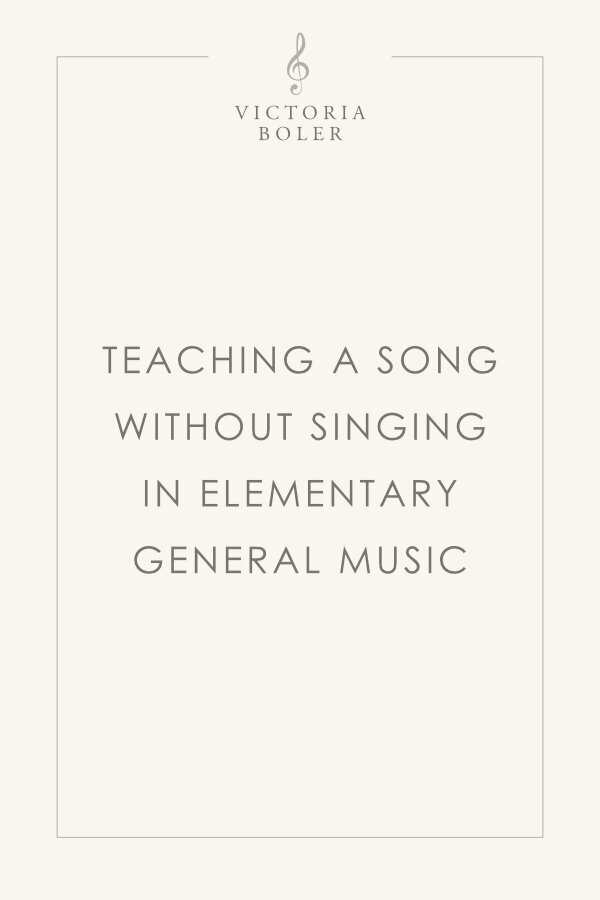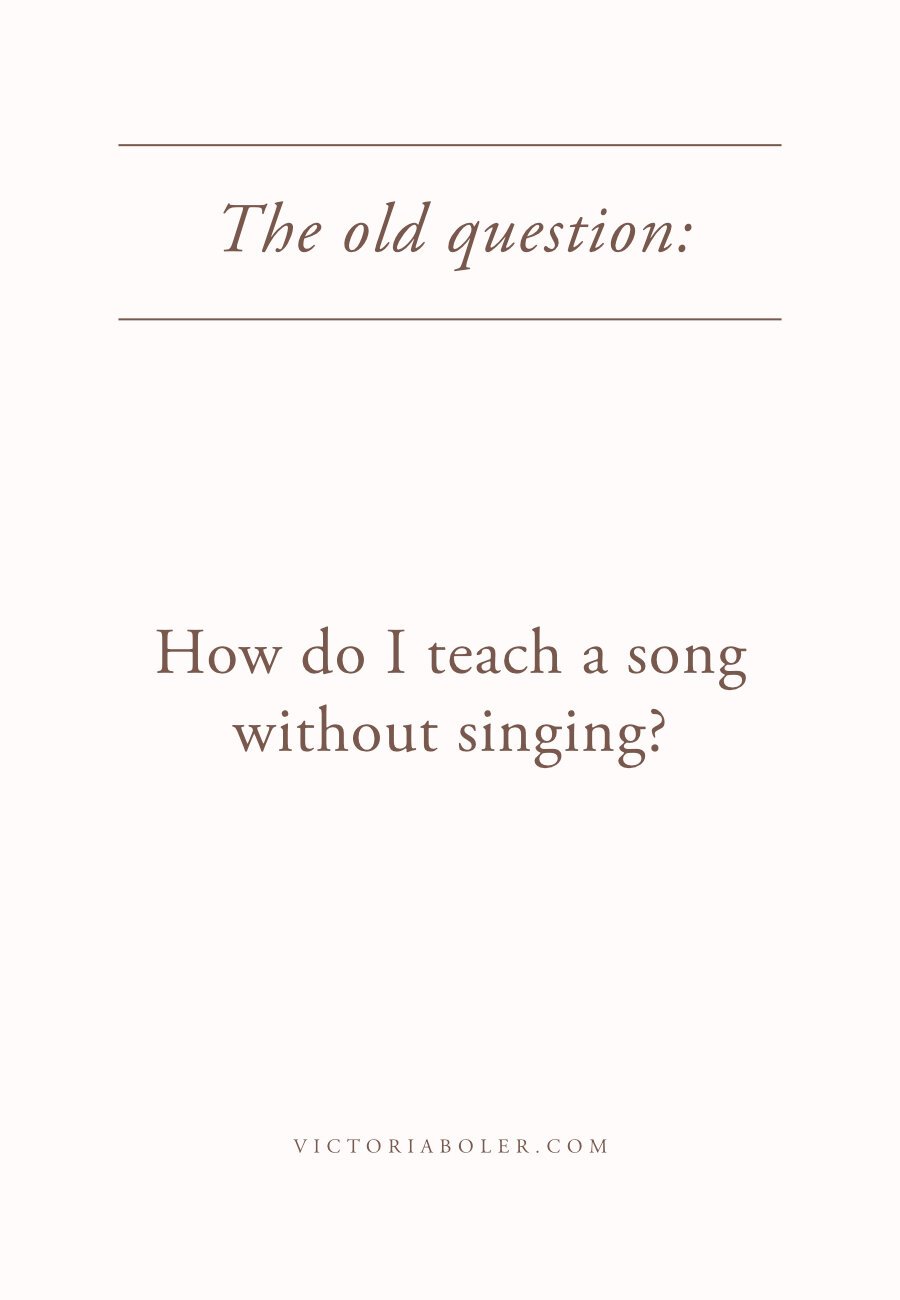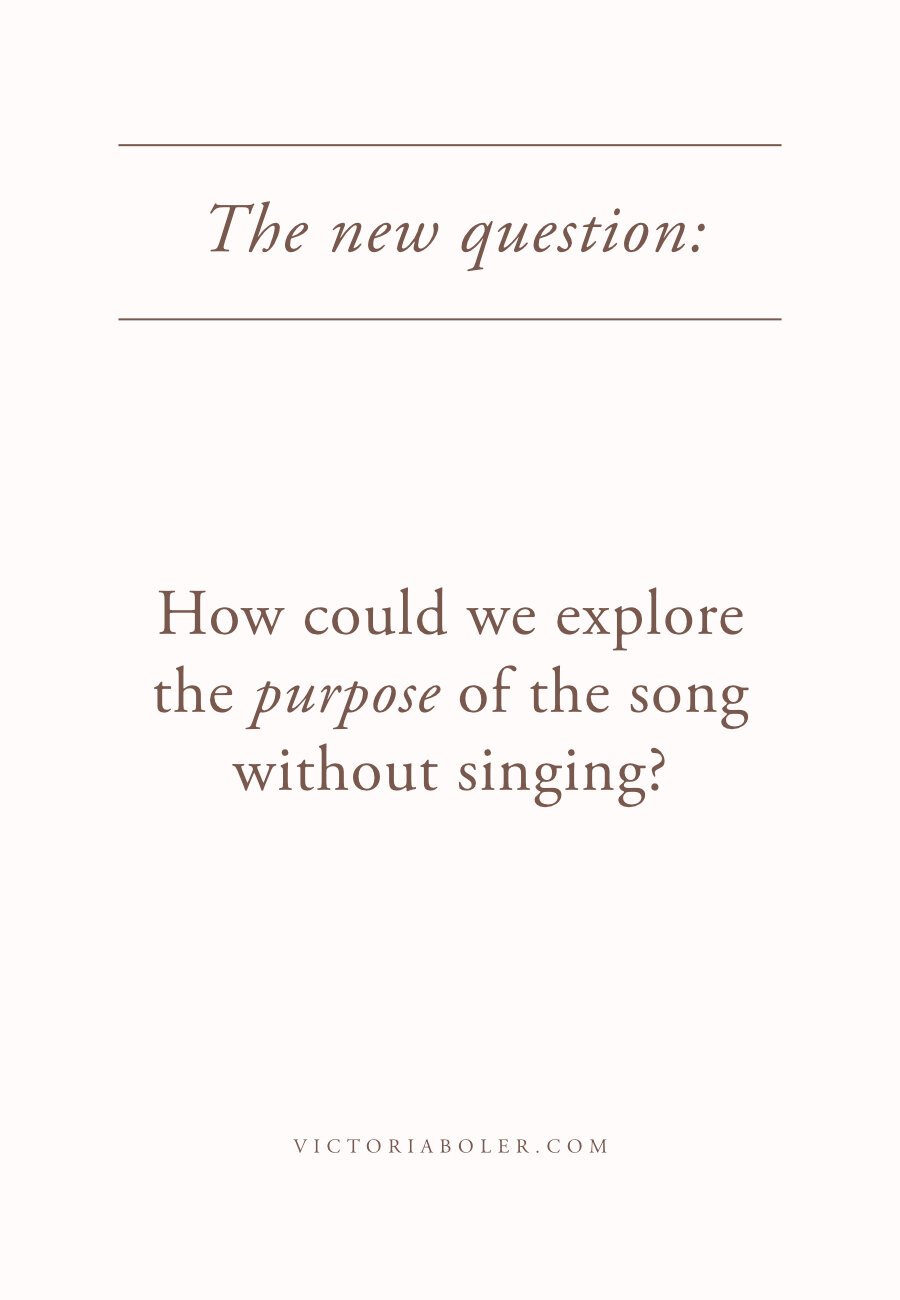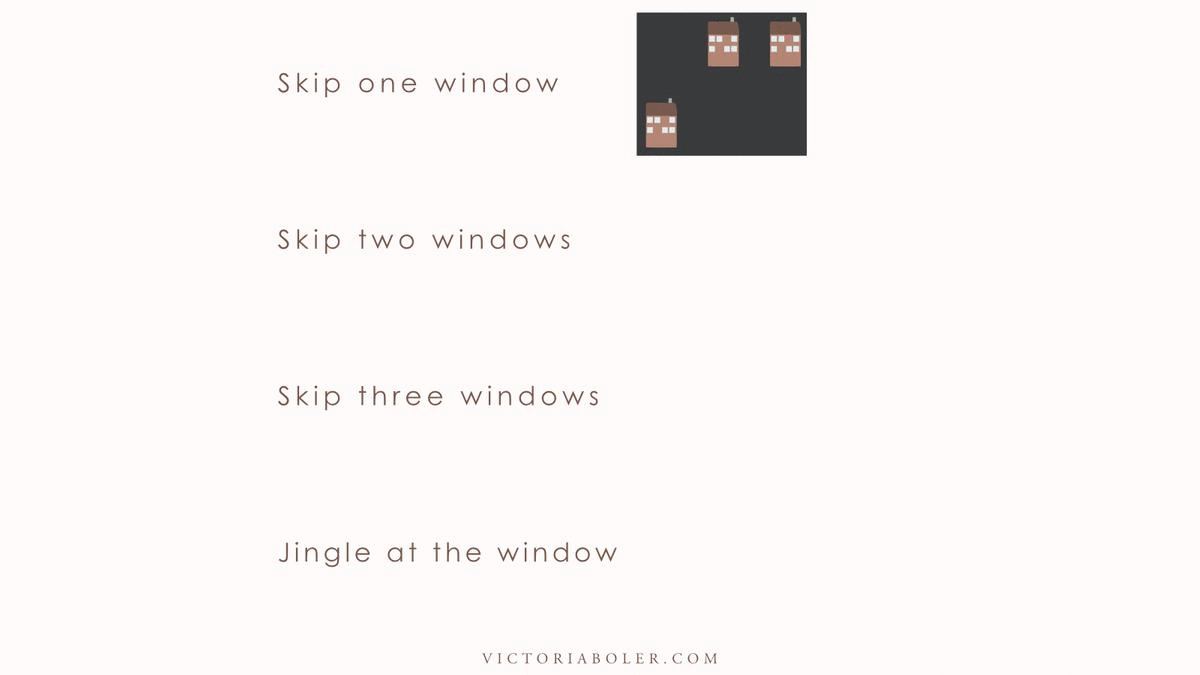Teaching a Song in the No-Singing, Socially Distant Music Classroom
This year is unique in so many ways. This year is challenging in so many ways.
One of the difficult obstacles many educators face is rethinking lesson ideas and teaching strategies to fall within the safety parameters set by their school districts, including no singing and no moving around the room.
These are the options we’re used to having:
What’s different about this year?
It’s not that much! We still have many options for active, student-centered musicing.
When a musical pillar like singing gets taken away, it can be hard to imagine our classes without it! However, when we take a step back and start with what we can do, we can find a different perspective.
This different perspective doesn’t change how challenging this year is, and it doesn’t take away how discouraged we can feel by the constant need to rework our go-to ideas.
But simple shifts to the reality of the situation (there are many avenues of musicing) instead of the false situation (I can’t do music this year) can be incredibly helpful as we move forward.
Today we’ll look at some practical ways to teach a song without singing.
We’ll begin with a framework you can use for any concept and any song in any year, and then look at a specific example of teaching a song without singing.
Let’s jump in!
Choosing Songs to Teach: Start with Purpose
When we know why we’re doing an activity, the rest of the steps suddenly become much more clear! The answer to the question becomes the primary goal in our musicing.
Possible Reasons for Selecting a Song:
There are infinite reasons we might select material for the music room. Here are some possibilities:
Just for fun! Simply having fun and collectively making music is a beautiful curricular objective
Melodic vocabulary: Maybe the song has a pattern of pitch relationships we want to highlight
Rhythmic vocabulary: Maybe the song uses a specific pattern of durations or a new collection of weighted beats
Form: Perhaps the song has an interesting structure we want to highlight
Partwork: The song might lend itself to exciting ensemble layers
Expression: The song might open our imaginations to exciting ways to show musical meaning through dynamics, articulation, and tempo variations.
When we’re clear on the purpose, we have an opportunity to transform the tired question (How do I teach a song without singing?) into one that moves us forward in a more musical way.
Transforming the Question
For so many educators, the question of how to teach a song without singing is one that causes confusion, anxiety, and discouragement. This is a tired question.
We can reframe it from one that causes confusion and anxiety to one that moves to clarity, imagination, and music.
The old question: How do I teach a song without singing?
The new question: How could I explore the purpose of the song (fun, melody, rhythm, form, partwork, expression, etc.) without singing?
Examples of Transformed Questions
Let’s go back to the purpose of the songs we’ve selected. With the purpose in mind, here are some examples of transforming the question to gain more clarity, imagination, and music.
Just for fun:
If we selected a song because its fun, our primary goal is not for students to sing the song. It's to have fun! How can we still have fun without singing?
The new question: What are some ways to have fun with this song without singing?
Building Melodic Vocabulary:
If we selected a song for a specific melodic understanding, what other ways of musicing could we use to show pitch relationships? Could we use visuals? Movements? Body percussion? Listening? All of these are wonderful options for embodying melodic ideas!
The new question: What are some ways to show pitch relationships without singing?
Building Rhythmic Vocabulary:
If we selected a song for a specific rhythmic understanding, how else could we show duration or beat? What other modes of musicing could we use besides singing?
The new question: How can we show duration without singing?
Form:
If the form of the song is important, how could we show the structure of same, similar, and different musical sections?
The new question: How can we explore the structure of music without singing?
Partwork:
If we love how the song helps students with musical independence in an ensemble setting, what are some ways we could explore that besides singing?
The new question: How can we practice independent musicianship without singing?
Expression:
If we chose the song because of all the opportunities for expressive musicing, the purpose of the song isn’t singing. The purpose of the song is exploring things like dynamics, articulation, and tempo variations.
The new question: How could we show interesting expressive qualities without singing?
These new questions do a much better job of moving our thoughts toward clear musical goals!
The Process for Teaching a New Song without Singing:
There will be variations in this process, and depending on the purpose of the activity this could be extended in many exciting ways! However, the core steps at beginning will probably follow this structure:
Listen (actively)
Notice something important about the song
Embody the important parts through a musical medium like movement, body percussion, or speech
Extend the activity based on your teaching objective
Action Example: Teaching Melody with Tideo
Let’s imagine we want to teach Tideo without singing. There are so many possibilities!
From Lois Choksy: 120 Singing Games and Dances for Elementary Schools
The song: Tideo
The purpose: Melodic patterns with mi re do
The question: How can we explore stepwise motion that moves to the tonic without singing?
There are infinite possible answers to this question! Here’s one process, but yours may be different. The text in italics is the teacher dialogue.
This recording is available as part of this collection of vocal recordings for elementary general music.
Step 1 - Active listening:
As you keep a steady beat to our new song, I have a curious question: What could this song be about? Listen to a recording of Tideo and tap a steady beat. Students share their answers.
Step 2 - Notice something important:
Interesting! This time as you tap the beat a different way, let’s listen for how many times our song says, “tideo.” Listen to the recording and tap the steady beat. Wait! Hold your answer in your head and double check while you keep the beat a new way! Listen to the recording again. Students hold up eight fingers.
Step 3 - Embody the important parts through a musical medium:
I agree, it is eight! This time, let’s show the direction of the melody on each “tideo” with our eyebrows OR our noses. You choose. Play the first half of the song only. Students show the melodic contour. Please talk to your shoulder partner about how each tideo is different. Students discuss with friends around them, then share answers as a class. Great! The first one moves up with a skip, the second moves down by step, the third moves up with a skip, the last one moves down by step. A pattern! This time as we listen you may silently show those movements any way you want. Students take a few seconds to think about their movements, and give a thumbs up when they have their motions ready. Listen to the first half of the recording again.
Step 4 - Extend based on your teaching objective
This is where the possibilities are endless! It’s likely that this step will take place in the next class, and could be extended for several lessons. Here are some ideas:
Notate the melody:
Now that we’ve listened to the target melodic pattern, moved to it in multiple ways, and talked about it with friends, students can help us map it out in graphic notation.
Graphic notation is a beautiful way for students to work with pitch relationships!
After students help us map the graphic notation, we can easily transfer it into standard notation as well.
Play on body percussion:
Students can take all their musical knowledge of the melody this far and play the melody on body percussion. To do this, students will need to show different levels of sound that reflect the melody.
To create their body percussion patterns, students might work independently, or with their immediate shoulder partner without contact.
Here’s one option, but there are many more!
Teaching a Song Without Singing
To recap, there are many possibilities for teaching a song without singing!
They start with having clarity on the purpose of the song. From there, we can help students actively listen to the song, notice the important aspects, invite them to embody the music, and extend the activity based on our musical objective.









